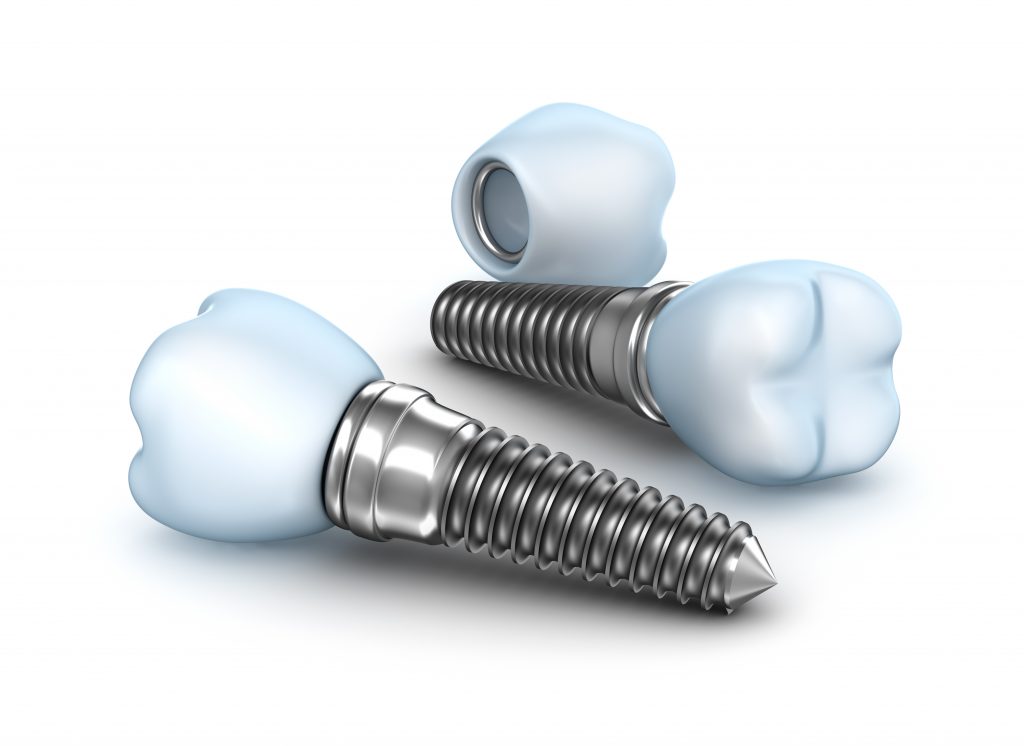The Pinhole® Surgical Technique (PST), developed by Dr. John Chao, offers a revolutionary approach to treating gum recession with minimal invasiveness and reduced recovery time. If you’re considering or have already undergone this procedure, it’s essential to understand what to expect during the recovery process and how to ensure the best outcomes. Here’s a guide to help you navigate the post-procedure experience.
Continue reading “What to Expect After Receiving Pinhole Surgery | Chicago Dentist”Pinhole Gum Restoration vs. Traditional Surgery: A Modern Approach to Gum Health | Chicago Dentist
Maintaining optimal oral health involves more than just a bright smile; it extends to the health of our gums. Gum recession is a common concern that, if left untreated, can lead to serious dental issues. Traditional gum surgery has long been the go-to solution, but a newer, less invasive technique called pinhole gum restoration is gaining popularity. Let’s explore the key differences between these two approaches.
Continue reading “Pinhole Gum Restoration vs. Traditional Surgery: A Modern Approach to Gum Health | Chicago Dentist”Revive Your Smile with Pinhole Gum Restoration | Chicago Dentist
Your smile is one of your most powerful assets, and it’s often the first thing people notice about you. However, if you suffer from receding gums, it can lead to not only aesthetic concerns but also oral health issues. Fortunately, the Pinhole Gum Restoration procedure offers a minimally invasive and effective solution to restore your gums and regain your beautiful smile.
Continue reading “Revive Your Smile with Pinhole Gum Restoration | Chicago Dentist”Getting a New Smile in a Single Day | Chicago Dentist

As we embark on a brand-new year, many of us sit down and reflect on things they’d like to improve upon. For some, it’s fitness. For others, it’s a lifestyle improvement. If you have a flawed smile, you may want to consider cosmetic dentistry. Believe it or not, you can get your grin fixed in a single day. Don’t believe it? May we introduce you to All-on-4 implants in a day. Although this form of treatment has received a significant amount of media attention in the past couple of years, this is a service we have been providing to our patients for some time.
Not sure you are eligible? There are generally two areas where this treatment is an option:
In certain patients with a front tooth that needs to be extracted and there is sufficient bone, the periodontist will remove the tooth and place a temporary implant on the same day. For individuals who are losing all of their teeth, we do a procedure called all on 4 (AO4). Not only is your replacement created in-office, but in six months later, you have the permanent appliance.
Once the periodontist places the implants (4-6 depending on the patient), there are precautions that the patient must take during the initial period to avoid biting on anything hard.
One thing that is not mentioned in the advertising is that in all instances, the immediate teeth are temporary and further work will be required 6 months later to ensure everything is working properly. In addition, the appliances must be kept clean to prevent the tissues from getting infected. The follow up cleaning appointments are typically alternated between the periodontist and the patient’s general dentist.
If you would like more information about all-on-4 implants, call Dr. Cabrera in Chicago, IL at 312-994-7939 or visit www.perioimplantchicago.com.
Dr. Peter O. Cabrera proudly serves Chicago and all surrounding areas.
Soft Tissue Grafting: A Case Study | Chicago Dentist

Although most people concentrate on the teeth for an attractive, healthy smile, the appearance of the gums cannot be ignored. Because your gums are the “frame of your smile”, an ugly frame will destroy the appearance of a beautiful smile. Knowing this, we will often use soft tissue to enhance the appearance of the tissue in conjunction with new restorations. The following case demonstrates one such example:
This case illustrates a 35-year-old physician who was missing two teeth in the front and had a bridge placed many years ago. She did not like the appearance of the bridge and wanted to replace it. The before photos illustrate how an unsightly indentation in the gum tissue compromised the appearance of the bridge. In addition to replacing the bridge, we wanted to improve the appearance of the tissue in order to improve her “picture frame”. Utilizing minimally invasive tunneling procedures, a collagen graft was placed to build out the tissue and create an appearance that a tooth was present, but in actuality, it is missing. The improvement was seen immediately at the time of surgery, and after several weeks in a new temporary bridge, the result is even more apparent. As you can see, we have created the illusion that there are teeth present by simply reconstructing the tissue.
If you find that you have gums that are affecting your smile and self-confidence, soft tissue grafting may just be the solution you’ve been looking for. Not only will it improve the look of your gums but will also give you a discreet way to bring back a reason to smile.
If you would like more information about dental bridges, call Dr. Cabrera in Chicago, IL at 312-994-7939 or visit www.perioimplantchicago.com.
Dr. Peter O. Cabrera proudly serves Chicago and all surrounding areas.
Recession and Permanent Orthodontic Retainers | Chicago Dentist

An important component of orthodontic therapy is retaining the teeth in their final position to prevent relapse. This retention is either in the form of a removable retainer or a fixed, permanent retainer. The latter is typically used on the inside part of the lower front teeth by bonding a wire to the six front teeth. However, not all wires are passive. In some cases, the wire retains tension and will force the teeth out of the bone over time.
We have seen an increased number of cases over the past few years.
The first case (fig 4) shows the recession and the wire along the tongue side. The second case (5-8) shows severe localized recession due to the torqueing motion of the wire.
This patient reported that she had a failed graft done several months before. In reality, the position of the tooth made it virtually impossible for any graft to succeed. This highlights that the most Important part of any treatment is an accurate diagnosis. The third case reflects the same problem.
If you see recession, it is time to visit a periodontist. As part of the comprehensive exam, Dr. Cabrera will check all factors that may be contributing to the recession. If a fixed retainer is contributing to the problem, Dr. Cabrera will inform you and make the appropriate recommendation.
If you would like more information about retainers, call Dr. Cabrera in Chicago, IL at 312-994-7939 or visit www.perioimplantchicago.com.
Dr. Peter O. Cabrera proudly serves Chicago and all surrounding areas.
The Aftercare of Dental Implants | Chicago Dentist

Getting dental implants can be a nervous time for a patient, but with implants-in-a-day, a patient can have their flawed smile fixed in a single dental visit. Not only is it quick, but the results look natural and feel comfortable.
But once you leave the dental chair, what should you expect? After all, getting a new smile in a single visit must hurt. Quite the contrary – because dental anxiety is a real condition, the patient’s comfort comes into the design of these procedures. However, there is a healing process that will take about 3-6 months, or until the implant fuses to the bone (integration). So, how do you cope during this healing time? Here are some tips:
Physical symptoms. Prepare for some bleeding and swelling for the next 24-48 hours. Gauze will help with the bleeding; bite down on a gauze pad for about thirty minutes. If swelling occurs, ice packs will help to reduce it. Keep something cold on the affected area until the swelling goes down. Warm saltwater rinses are also great to reducing swelling. If you experience any pain, taking Tylenol or Ibuprofen will help the transition as the anesthetic wears off.
Diet. This one will be tricky for a while. The first day, limit your food to liquids and soft textures. As it becomes easier to eat, you can slowly move to your regular diet. Make sure to drink plenty of fluids to stay hydrated.
Moving around. You may think you won’t need downtime, but that’s not true. Oral surgery is just like any surgery – relax and focus on the healing process. Too much activity may cause bleeding or throbbing in the area.
If you would like more information about dental implant aftercare, call Dr. Cabrera in Chicago, IL at 312-994-7939 or visit www.perioimplantchicago.com.
Dr. Peter O. Cabrera proudly serves Chicago and all surrounding areas.
Dental Implants Can Replace Your Dentures | Chicago Dentist

It’s inevitable. As we progress in age, it is possible that many of us will require dentures, especially when we don’t practice good dental hygiene. Like they always say, “You don’t need to take care of all of your teeth, just the ones you want to keep.”
If you find that you are on the side of needing dentures, please realize that you may find that wearing dentures to be cumbersome, as they tend to need a lot of maintenance and have a tendency to shift around inside the mouth. This ill-fitting fix to our dental issues not only leads to discomfort and soreness but can even affect our self-confidence.
Thankfully, implantology has progressed to the point that denture issues are a thing of the past. Now dentures can be attached to the mouth with dental implants. During this surgery, your periodontist will place dental implants that vary in size depending on your anatomy. Patients can function well with two implants on the lower while more implants are typically needed on the upper as the bone is softer. This is especially beneficial to those that have difficulty wearing dentures due to their sensitive gag reflex. Upper implants allow the roof of the denture to be removed because it is fixed to the upper jaw.
Now for the advantages – not only will wearing dentures become a whole lot less cumbersome, but this procedure is affordable and minimally invasive. For best and long-lasting results, the surgery is performed by a well-trained surgical specialist, the periodontist in collaboration with your dentist.
If you are considering dentures to improve your smile, discuss your options with your periodontist. You could be the perfect candidate for implants.
If you would like more information about dental implants, call Dr. Cabrera in Chicago, IL at 312-994-7939 or visit www.perioimplantchicago.com.
Dr. Peter O. Cabrera proudly serves Chicago and all surrounding areas.
What to Do When You Develop Receding Gums | Chicago Dentist

There is little more deflating to your smile than receding gums. Not only does it change the look of your smile, but it can also cause your overall demeanor to change as well. We all want a great smile to show off. But receding gums is a natural thing to happen as we age. Fortunately, there are solutions to this dental issue, and it doesn’t have to be as invasive as it once was.
The goal of correcting gum recession is to rebuild the lost tissues and where possible, cover the roots in order to prevent infection. It is important to fix this dental issue before more extreme issues, like infection or gum disease, arise in the future. There are many procedures to accomplish this. One of the earliest treatments published was the connective tissue graft introduced in the early 1990’s, and can be seen in an article published by Dr. Cabrera in The Journal of the American Dental Association in 1995 titled The Connective Tissue Graft, and later reprinted in The Canadian Dental Journal.
But what does this treatment option entail? A very small opening is created either on the roof of the mouth or behind the last upper teeth. The tissue is then secured to the area of recession with small (slightly bigger than a human hair) sutures (stitches). In most cases, recovery is uneventful, requiring no more than over-the-counter medication.
This approach has been refined over the years. Today, we also employ a number of procedures classified as tunnels, which use very small incisions to accomplish the surgery. As you can see, there is no reason to hide your smile with receding gums – visiting a dental professional can easily repair the look of your smile and the health of your gums.
If you would like more information about rececding gums, call Dr. Cabrera in Chicago, IL at 312-994-7939 or visit www.perioimplantchicago.com.
Dr. Peter O. Cabrera proudly serves Chicago and all surrounding areas.
Why Do My Teeth Hurt? | Chicago Dentist

It’s very unsettling when we get a toothache. Not only does the pain give you a major headache, but it likely means a visit to the dentist because, unfortunately, we can’t diagnose our oral pain. And there are many reasons your mouth may hurt. Here is a list of possible issues that may have caused your dental pain:
Temperature sensitivity. If you are feeling pain when you eat or drink hot or cold, it is due to worn tooth enamel or exposed nerves.
Gum recession. As we age, our gums begin to recede, and this causes our teeth roots to be exposed, making you more susceptible to gum disease or other oral infections.
Erosion. 12% of people develop “dentin hypersensitivity” because of a highly acidic diet or brushing too hard, which causes your enamel to erode.
Cavities. Poor diet and dental hygiene can cause your teeth to decay, causing cavities. This is why daily dental hygiene is so important.
Gum infection. 47% of adults over the age of 30 develop gum disease at some point in their lives. Keeping dental appointments is beneficial to stay on top of your mouth’s health.
Cracked tooth or crown. If you find that you’ve cracked a tooth or a crown, make a dental appointment as soon as possible to avoid major tooth pain.
Sinus infection. As your sinuses become inflamed and become pressurized, it can affect your teeth.
Jaw clenching. Grinding your teeth wears down your tooth enamel, which then causes your teeth to hurt.
Dental procedures. Dental work can leave you feeling sore. Take heed of your dentist’s recommendations for aftercare.
Teeth bleaching. While they do improve your smile, bleaching your teeth can cause you some discomfort. It’s temporary but avoid overbleaching.
If you would like more information about tooth pain, call Dr. Cabrera in Chicago, IL at 312-994-7939 or visit www.perioimplantchicago.com.
Dr. Peter O. Cabrera proudly serves Chicago and all surrounding areas.



